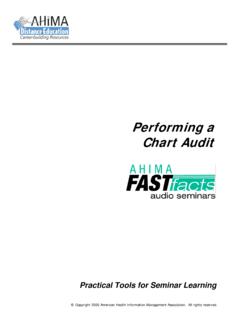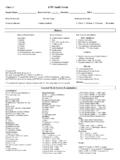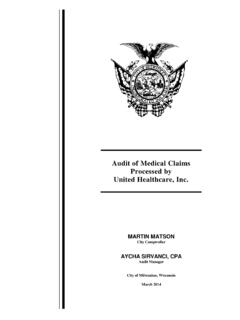Transcription of SPECIALTY EXAM: MUSCULOSKELETAL HIC# DATE …
1 Performed and DocumentedLevel of ExamOne to five bulletsSix to eleven bulletsTwelve or more bulletsAll bulletsProblem FocusedExpanded Problem FocusedDetailedComprehensive(Circle the bullets that are documented.)System/BodyAreaElements of ExaminationHIC#DATE OF SERVICE(Enter the number of circled bullets in the boxes below. Then circle the appropriate level of care.)EXAMOne to FiveBulletsSix to ElevenBulletsTwelve ormore BulletsProblem FocusedDetailedComprehensive1bExtremitie s10226 11/97 Note:The Chest (Breasts); Gastrointestinal (Abdomen); Genitourinary; Head/Face; Eyes; Ears, Nose, Mouth and Throat; Neckand Respiratory systems/body areas are not considered to be part of this MUSCULOSKELETAL to data section (table below) in order to quantify. After reviewing the medical record documentation, identifythe level of examination.
2 Circle the level of examination within the appropriate grid in Section 5 (Page 3).LymphaticSkinConstitutionalMeasuremen t of any three of the following seven vital signs: 1) sitting or standingblood pressure, 2) supine blood pressure, 3) pulse rate and regularity, 4) respiration,5) temperature, 6) height, 7) weight (May be measured and recorded by ancillarystaff)General appearance of patient ( , development, nutrition, body habitus,deformities, attention to grooming)lllPalpation of lymph nodes in neck, axillae, groin, and/or other locationCardiovascularExamination of peripheral vascular system by observation ( , swelling,varicosities) and palpation ( , pulses, temperature, edema, tenderness)(See MUSCULOSKELETAL and Skin)Inspection and/or palpation of skin and subcutaneous tissue ( , scars,rashes, lesions, cafe-au-lait spots, ulcers) in four of the following six areas.
3 1) head and neck, 2) trunk, 3) right upper extremity, 4) left upper extremity,5) right lower extremity, and 6) left lower extremityNote:For the comprehensive level, the examination of all four anatomicareas must be performed and documented. For the three lowerlevels of examination, each body area is counted separately. Forexample, inspection and/or palpation of the skin and subcutaneoustissue of two extremities constitutes two coordination ( , finger/nose, heel/knee/shin, rapid alternatingmovements in the upper and lower extremities, evaluation of fine motorcoordination in young children)Examination of deep tendon reflexes and/or nerve stretch test with notationof pathological reflexes ( , Babinski)Examination of sensation ( , by touch, pin, vibration, proprioception)Orientation to time, place and personMood and affect ( , depression, anxiety, agitation)Brief assessment of mental status including.
4 Lllllll1aMusculoskeletalExamination of gait and station *(if circled, add to total at bottom of column to the left)Examination of joint(s), bone(s), and muscle(s)/tendon(s) of four of the following sixareas: 1) head and neck; 2) spine, ribs, and pelvis; 3) right upper extremity; 4) left upperextremity; 5) right lower extremity; and 6) left lower extremity. The examination of a givenarea includes:Inspection, percussion and/or palpation with notation of any misalignment,asymmetry, crepitation, defects, tenderness, masses or effusionsAssessment of range of motion with notation of any pain ( , straight leg raising),crepitation or contractureAssessment of stability with notation of any dislocation (luxation), subluxation or laxityAssessment of muscle strength and tone ( , flaccid, cog wheel, spastic) withnotation of any atrophy or abnormal movementsNote:For the comprehensive level of examination, all four elements identified by abullet must be performed and documented for each of four anatomic areas.
5 Forthe three lower levels of examination, each element is counted separately foreach body area. For example, assessing range of motion in two extremitiesconstitutes two EXAM: MUSCULOSKELETALAll BulletsExpanded ProblemFocusedElements of ExaminationSystem/Body AreaNOTE:For the descriptions of the elements of examination containing the words "and", "and/or", only one (1) of thoseelements must be :Determine the numberof body areas addressed withineach bullet. Enter that numberon the line beside each at the bottom of this , percussion and/orpalpation:Assessment of range of motion:Assessment of stability:Assessment of muscle strengthand tone:* Total Bullets: (including gait and station)











